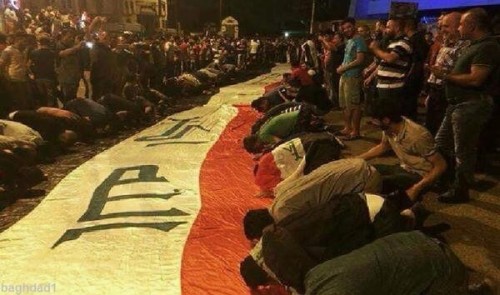PHOTO: Protesters in Baghdad on Saturday night
Mass protests in Iraq on Friday highlighted public discontent with the Government over power cuts amid a heat wave.
For weeks, many Iraqis have endured temperatures of up to 50 Celsius (122 Fahrenheit) with only about two hours of electricity per day for air conditioners and refrigerators. Wealthier citizens are running gasoline-powered private generators to endure the conditions.
On Wednesday, Prime Minister Haider al-Abadi ordered electricity to be cut at state institutions and the homes of all government officials, and on Thursday, the Government ordered a four-day public holiday.
The difficulties in Iraq’s infrastructure have long been entrenched, with damage in the 1991 Gulf War, subsequent US and international sanctions, and the 2003 US-led invasion. US projects during the post-war occupation have fallen into disuse or have been sabotaged.
However, the problems have been compounded by apparent Government mismanagement and disputes. The Electricity Ministry is blaming the Oil Ministry for not providing enough gas to operate power plants. The Government’s five-year plan provides for only 400 MW of new renewable energy plants to meet a demand of 37,000 MW.
Protests have built for weeks in the south in Basra, Iraq’s second city. Police killed one demonstrators amid accusations that they used live ammunition.
The demonstrations spread to Baghdad and the holy city of Najaf on Saturday. In the capital’s Liberation Square, thousands chanted against the lack of electricity and corruption and demanded the dismissal of Electricity Minister Qasim al-Fahdawi.
In Najaf, crowds were stopped by security forces and bodyguards from reaching the home of Iraq’s leader cleric, Ayatollah Sistani. A representative of Sistani warned the Government to be careful, as “people’s patience has limits”.
The crowd in Liberation Square:


